When you own a horse or ride horses regularly, grooming will become a staple in your routine. You’re doing it all the time!
If you’re a first-time horse owner or new to riding, it can be a little intimidating to pick it up. Usually, people just expect you to know how and you don’t want to look silly or like a beginner.
But don’t worry… Today we’ll go through everything you need to know so you can look like a pro right off the bat!
This easy step-by-step guide to horse grooming will teach you in 4 quick steps how to groom a horse and keep them cleaner, healthier, and happier on a daily basis.
This article may contain affiliate links, which means we may earn a small commission if you choose to make a purchase.
Why Do Horses Need to Be Groomed?
First, let’s start with why you should even bother grooming your horse. Of course, it helps your horse look pretty, but it’s actually much more important than just for looks! Good horse hygiene is important in keeping your horse’s body healthy for the long run.
Your horse definitely needs to be groomed before and after every ride to keep their coat—and especially their hooves—clean. If your horse has something in their hoof (like a stone, for example) and you take them out for a hard ride, it could be very painful and potentially harmful to them.
After a ride, when your horse is sweaty, grooming helps to dry them off and prevents them from getting cold and stiff. This also reduces injury and keeps your horse happier and healthier!
Also, your horse should be groomed after a bath to again help with smoothing and drying their coat as well as untangling their mane and tail.
How Often Should You Groom A Horse?
Ideally, your horse should be groomed every day (even when they are not being ridden).
You should ideally go through the basic grooming 4-step regimen outlined here with your horse on the following 3 occasions:
- Before going for a ride
- After going for a ride
- Every day (if not ridden)
How Long Does It Take to Groom a Horse?
The length of time you spend grooming can vary a lot. It might take longer at first as you get the hang of it, but you’ll get faster as you do it more often. Of course, it also depends on how dirty they are!
In general, your pre-ride grooming routine will last 10 to 15 minutes as you give them a light brush and make sure there’s nothing stuck in their hooves.
Your post-ride groom will probably take longer since they’re likely to be more sweaty and dirty. Grooming after a ride will usually take around 30 to 45 minutes. This is also a great time to bond with your horse!
What Happens If You Don’t Groom Your Horse?
Like I mentioned above, grooming is important for your horse’s health and overall cleanliness. It can help to keep their coat clean and keep your horse comfortable.
But the most important reason you should groom your horse regularly is because of their hooves. If you don’t groom your horse’s hooves regularly and remove any trapped stones, this could result in injury for your horse, such as a lame leg. This can be a very serious problem for a horse if left unattended and this is the biggest reason to make sure you’re grooming your horse regularly!
What Do You Need for Grooming a Horse?
If you don’t already have one, I recommend getting a kit that has everything you need in one. This is the one I recommend (and you can view my full review here).
But if you want to purchase your horse grooming tools separately, here is what you’ll need:
- A curry comb (either rubber or metal)
- A hard body brush (like this one)
- A soft body brush (like this one)
- A hoof pick (such as this one)
- A hair brush and/or wide-toothed comb (optional)
- Fly spray (as needed)
- Sweat scraper (as needed)
- Sponge with warm water (optional)
- A shedding blade (if needed in the spring)
Now, let’s learn how to properly implement a daily grooming routine!
How to Groom a Horse (Step by Step)
Step 1: Start By Loosening the Dirt with a Curry Comb
The first step in grooming your horse is currying. You’ll want to start by currying your horse in order to loosen up all the dirt from your horse’s coat.
What is currying?
A curry comb has an oblong shape and is usually made from rubber with many small rubber bumps on it. Some curry combs are made from metal and have metal “teeth” on them. It looks like this:
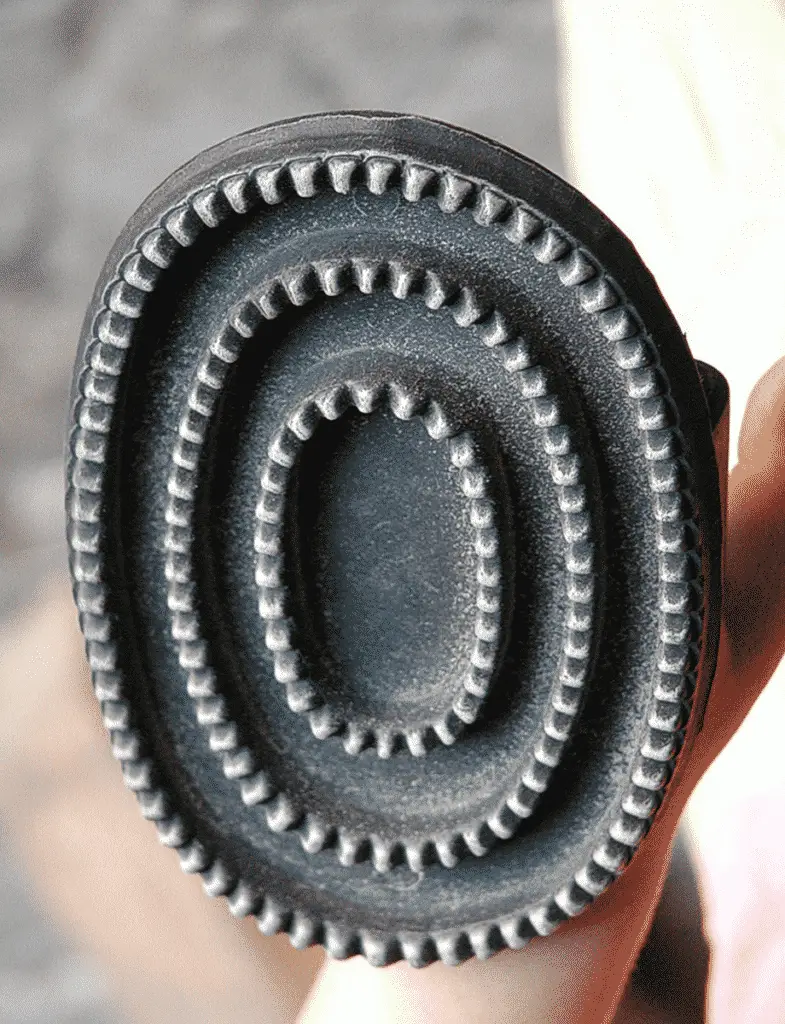
You should move this comb along the horse’s coat in small circular motions. You don’t want to press too hard, but you don’t be too gentle either as you want to lift up the dirt from within your horse’s coat.
You’ll See the Dirt Being Lifted…
As you circle the brush, you will see a bunch of dirt grains become visible as they are brought up from the horse’s skin up to on top of his or her coat. This loosened dirt will now be much easier to brush off than it would have been if it had been embedded at the bottom of the horse’s coat near his or her skin.
Work From Ear to Tail
Even though the order is not super important here, you will usually want to start from your horse’s neck and proceed down along the body. Do not curry comb the horse’s face, the horse’s mane, the tail, or the lower legs. (It is not effective in these areas and we’ll use something else for these parts.) Curry combs are most useful along the neck, back, sides, rump, and stomach of your horse.
Safety Notes
Remember to be in contact with your horse as much as possible when you are grooming him or her. Especially if you have to walk behind your horse, keep one hand on the top of the rump so that your horse knows where you are when he or she can’t see you. This will not only keep the horse calmer and happier but will also help you two bond and form trust.
Note that some horses don’t necessarily like being curried because they don’t like the feeling of the rubber. A well-trained horse should remain calm and trust you. (However, I used to groom a feisty little black pony who would buck and kick at his stall the second the curry comb touched him no matter what we did!)
Just be cautious with this. In fact, be cautious with all of the following grooming steps, especially if this is your first time grooming the horse in question. If this is your first time grooming any horse, ask someone experienced and confident to observe and help you if you need to.
Step 2: Flick the Dirt and Sweat Off With the Hard Brush
What is a Hard Brush?
A hard brush and a soft brush look very similar except that a hard brush has stiffer bristles. It’s also called a dandy brush or a stiff brush. They look like this:
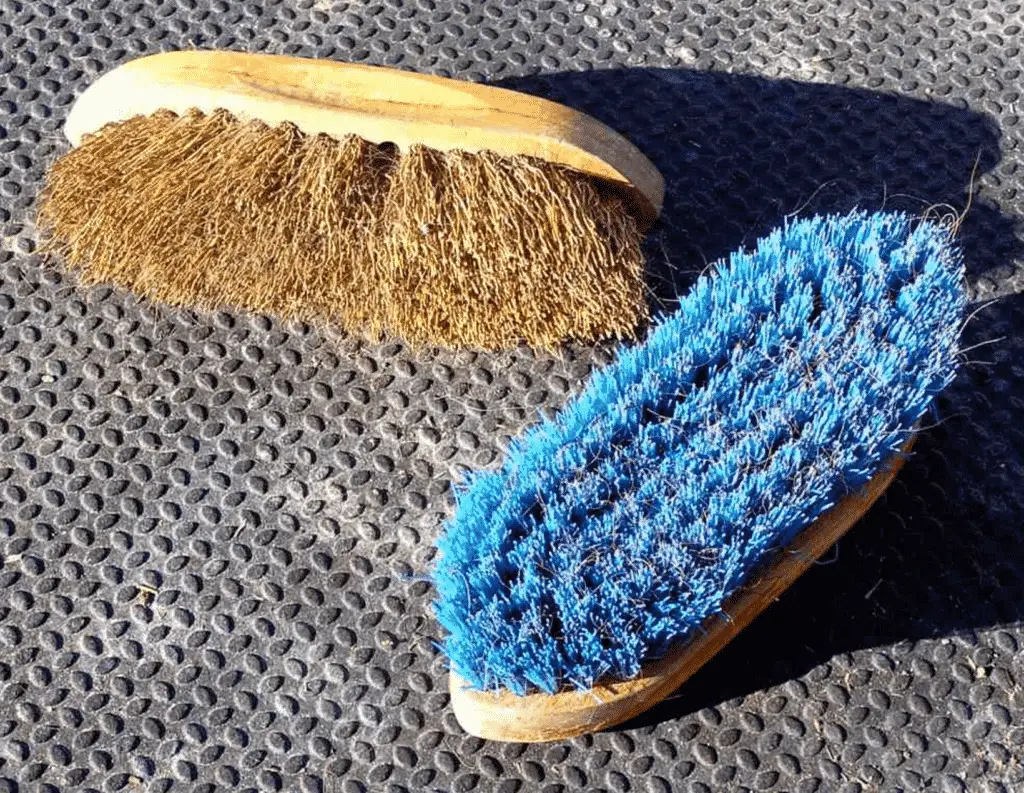
You want to use a sweeping motion to “flick” off the dirt and/or sweat from your horse’s coat now that it’s all sitting on the top. Don’t use strokes that are too long as you don’t want to push the dirt back in.
You simply want to use short, flicking motions to sweep the dirt and sweat off with the dandy brush. You can usually see the dirt coming off in little puffs or a bit of the sweat spraying off.
Work From Ear to Tail…
Start along the neck and work your way down along the horse’s body. You want to move the dirt backward and off your horse as you go. Don’t brush your horse’s face, mane, tail, or lower legs. (Some do use the hard brush for these areas, but I find the soft brush is better because it is gentler on the horse and their coat/mane/tail.)
Step 3: Smooth Out Your Horse’s Coat, Mane and Tail Using the Soft Brush
What is a Soft Brush?
As I mentioned above, the soft body brush is very similar to the hard brush, but it just has softer bristles. Here’s an example of what a soft brush looks like:
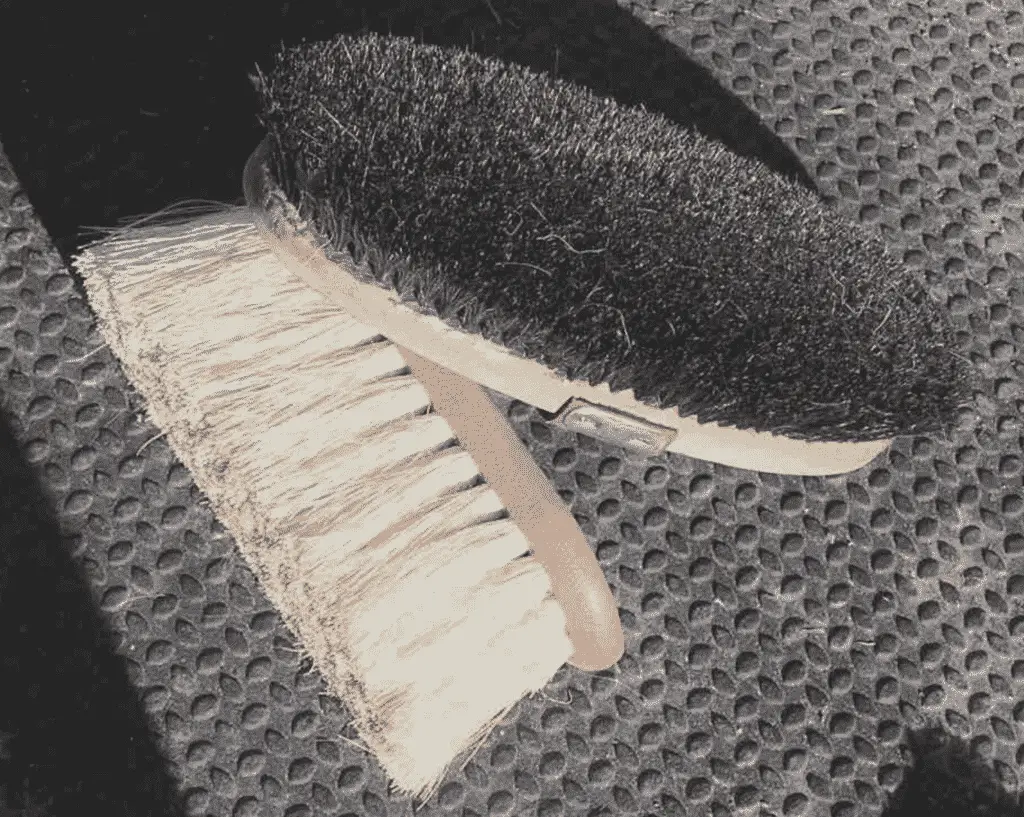
Run the soft brush over your horse’s body in order to finish off your horse’s coat and give it a softened, shiny feel. The soft brush removes some dirt but functions more as a smoothing tool. You want to use this brush in long, smooth strokes. Flicking motions that work for the hard brush aren’t as effective here.
Once Again, Work from Ear to Tail
Start from the head and work your way down along the horse’s legs and body. Finish off with your horse’s mane and tail. With the tail, do not stand directly behind your horse. In fact, you should never be standing directly behind your horse for any length of time, especially without contact. Stand instead on your horse’s left side facing opposite from your horse so that your horse’s left rump side is beside you and in contact with your shoulder/side and bring your horse’s tail towards you to brush.
A Soft Brush Is Useful For More Difficult Areas
The soft brush is what you should use on your horse’s head (along the nose bridge and cheeks) but be careful to avoid the horse’s eyes, end of the nose, and the nostrils, as these are all very sensitive areas.
Soft brushes can also be great for brushing out your horse’s mane and tail. They are not as quick as hard brushes but I find they are gentler and better for the health of your horse’s hair.
Finally, you can use quick sweeping motions with your soft body brush to flick off dirt in the case of the horse’s lower legs, which are too sensitive for stiff bristles.
Or, You Can Use a Wide-Toothed Comb for Your Horse’s Mane & Tail
For daily grooming, the soft brush is sufficient for brushing out your horse’s main and tail. But every once in a while (such as after a bath or before a show), you may want to completely detangle your horse’s mane and tail. For this, you will need a mane and tail “hair brush” and/or a wide-toothed mane comb.
This is a longer process that requires lots of patience. Don’t be too aggressive, but you also don’t have to treat your horse like a porcelain doll… If you pull slightly, they aren’t going to be in pain. It’s just like brushing through your own hair except with much thicker skin!
Step 4: Finish Off With Your Horse’s Hooves
Now it’s time to pick out the dirt, stones, and gunk from those hooves! To do this, you’ll need a hoof pick.
What is a Hoof Pick?
A hoof pick will have a rubber handle usually attached to a metal pick. Sometimes there will be a mini-brush on the opposite side of the pick. The metal end of the pick is used to dig out dirt, stones, and other gunk that has gotten stuck in your horse’s hoof. The brush can be used to quickly flick out drier dust or little bits the pick can’t get. Here’s an example of what a hoof pick might look like:
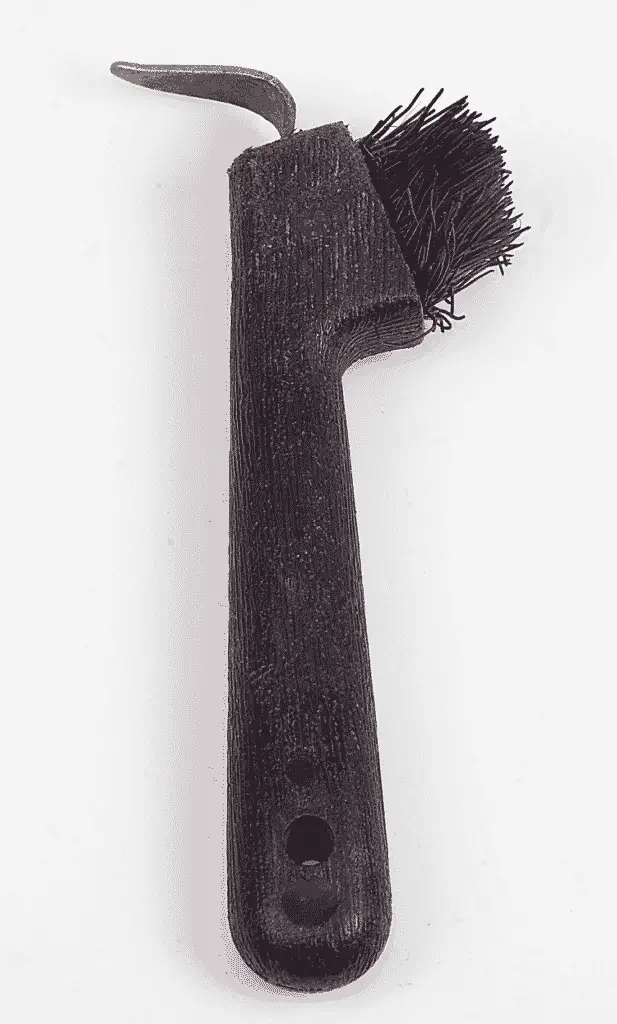
Hoof picking is a super important step because stones lodged in a hoof for too long can be painful for your horse. Rarely, they can even cause lameness in that leg. So it’s vital that your horse’s hooves are always picked properly before and after every ride!
How to Hoof Pick Safely
Picking can be intimidating for many—especially new riders—because it requires you to handle your horse’s hooves and actually support them. And we all know how much force a horse can muster behind a hoof!
So the most important parts of this step are:
- To make sure you have someone experienced help you if it’s your first time or if you are unsure
- And to make sure you are as relaxed as possible
Your horse can sense if you are anxious. This in turn can make him or her anxious because your anxiety is an indication to your horse that there may be a “threat” nearby. This is an instinct your horse possesses that was used to avoid predators in the wild.
How to Get Your Horse to Lift a Hoof
So how do you get your horse to lift their hoof so you can clean it? First, you want to start by standing next to your horse on the left facing opposite your horse so that your left shoulder/side is in contact with your horse’s left one.
Have your hoof pick in your right hand.
Then you want to slowly slide down your left hand along your horse’s front left leg, turning your hand so that eventually you will be cupping your horse’s hoof in it. At the same time as your doing that, you want to lean into your horse gently so that you are putting pressure on the left shoulder.
This will reflexively cause your horse to pick up that left front hoof for you. Once the hoof is up, keep it supported securely in your hand.
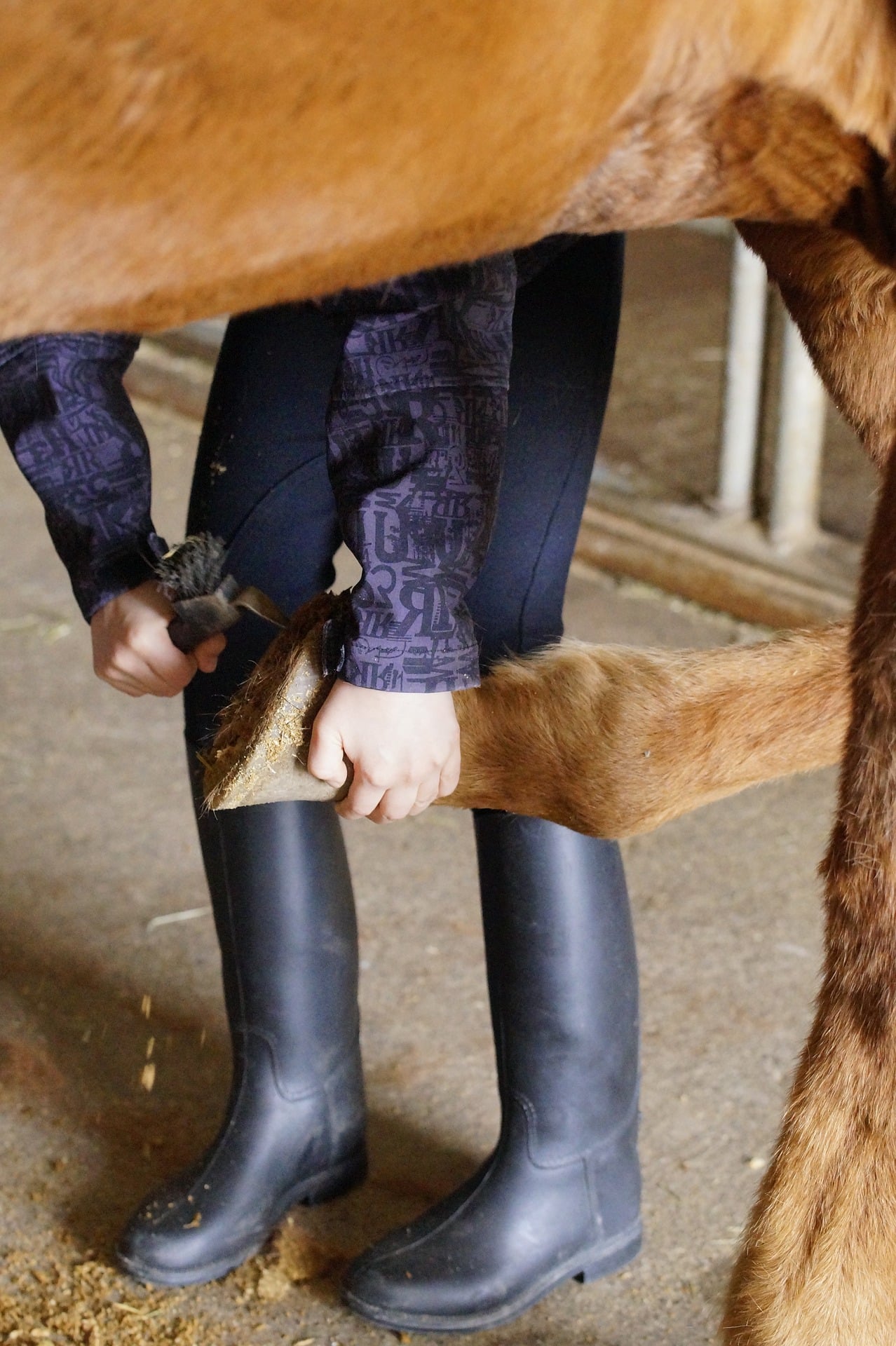
Hoof Care: Where and Where NOT to Pick
Use your hoof pick to pick out dirt, stones, and anything else from the grooves on the sides of the frog. (The frog is the part of the hoof in the middle that sticks out. It’s not as hard as the rest of the hoof and is shaped roughly like a triangle.) You basically want to make sure the hoof is clean all around the frog.
Make sure you do NOT pick the frog, as this area is sensitive and your horse may react!
Repeat the process for each of your horse’s four hooves.
For Stubborn Horses
Some horses are more stubborn on certain hooves, like rear hooves or one hoof in particular. Vary the amount of pressure you apply with your body until the horse raises a hoof.
Also, you can simultaneously be applying pressure right above your horse’s hoof on the leg towards the back, therefore coaxing your horse to lift a hoof with two separate pressure points at the same time.
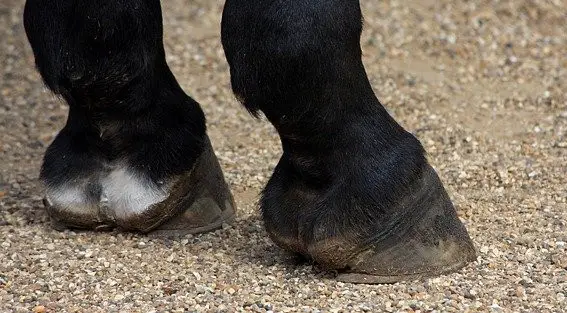
Bring In a Farrier Regularly
In addition to your daily grooming regime, remember to occasionally bring in a farrier.
It’s generally recommended that your horse should see a farrier every 6 to 8 weeks. They’ll determine whether your horse needs shoes, and re-shoe them as necessary. They’ll also trim your horse’s hooves, and check them for any hoof disease or damage.
To learn more about the essentials of hoof care, check out this article.
Optional Extra Steps & Grooming Tips
In addition to your daily grooming, here are some additional steps you may want to take as needed:
- Give your horse a warm sponge bath to cool them down, relieve sore muscles, and wash off dirt (to learn how to do a more complete horse bath, click here.)
- Apply fly spray if your horse is being bothered by bugs. (This is most often the case in warmer weather.) You can apply the fly spray over your horse’s entire body EXCEPT in his or her face.
- If your horse had an extra-sweaty ride, you may want to use a sweat scraper to remove the excess moisture from their cost before brushing.
- If needed, you can also use a shedding blade to help remove extra hair from your horse’s coat during shedding season (in the spring).
All Done! Horse Grooming Made Easy, Eh?
Yay – you did it, great job! Your horse is now freshly groomed and happy. I like to give my horse an apple or a carrot or any other kind of treat for putting up with me prodding and pestering him or her after I’m finished horse grooming.
If you’re looking to buy your own grooming kit, here’s the one I recommend for beginners.
Is it wash day? Every once in a while, your horse will need a bath. Here’s my guide on how to wash your horse!
Please don’t hesitate to comment below if you have any questions on horse grooming and how to groom a horse.
Happy riding!
Martina
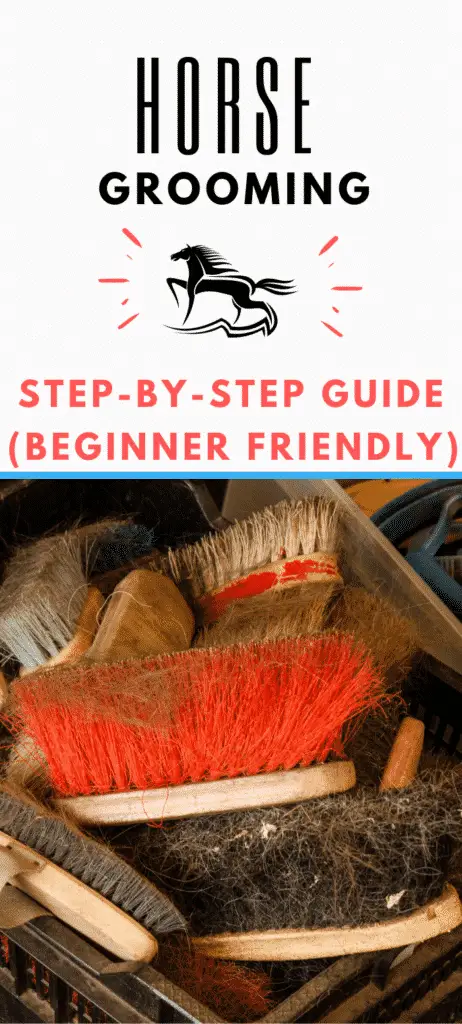

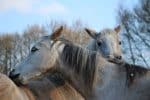
I was WOWed from the beginning and you kept me interested all the way to the end. Great post and I learned a great deal about grooming, safety, and proper technique/tools. I personally do not own a horse, but living in the country I get to watch my neighbors’ horses all the time. So majestic and beautiful. Thank you for sharing your knowledge and tips. I really enjoyed learning about grooming and proper care of a horse–even if I only get to watch them.
Hey Shawna!
Thank you so much for your positive feedback. Really appreciate that and I’m happy you found it useful and entertaining! No problem 🙂 Enjoy the beautiful scenery!
Thank you, it was very helpful to this rookie. All the links were very helpful as well
Thank you. Very informative. Especially you explaining all of the different brushes and where to use them.